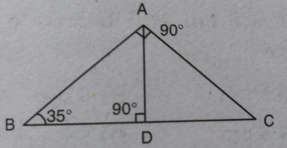F A={x:x is a natural number},
B={x:x is an even number},
C={x:x is an odd number},
D={x:x is a prime number}
then find and . Solution in Telugu
The correct Answer is:
Step by step video, text & image solution for F A={x:x is a natural number}, B={x:x is an even number}, C={x:x is an odd number}, D={x:x is a prime number} then find A cup B, A cap B, B cap C and B cap D. by Maths experts to help you in doubts & scoring excellent marks in Class 10 exams.
Updated on:21/07/2023Topper's Solved these Questions
- SETS Book:VGS PUBLICATION-BRILLIANTChapter:SETS Exercise:OBSERVATION BITS TO SOLVE VARIOUS QUESTION GIVEN IN THE PUBLIC EXAMINATION
Explore 21 Videos
- SETS Book:VGS PUBLICATION-BRILLIANTChapter:SETS Exercise:CREATIVE BITS OF CCE MODEL EXAMINATION
Explore 116 Videos
- SETS Book:VGS PUBLICATION-BRILLIANTChapter:SETS Exercise:EXERCISE 2.4
Explore 12 Videos
- REAL NUMBERS (MULTIPLE CHOICE QUESTION)Book:VGS PUBLICATION-BRILLIANTChapter:REAL NUMBERS (MULTIPLE CHOICE QUESTION)Exercise:REAL NUMBERS (MULTIPLE CHOICE QUESTION)
Explore 22 Videos
- SIMILAR TRIANGLES Book:VGS PUBLICATION-BRILLIANTChapter:SIMILAR TRIANGLES Exercise:CREATIVE BITS FOR CCE MODEL EXAMINATION
Explore 90 Videos
Similar Questions
Set of human being that reside on moon is ………………..
View SolutionLet A={1,2,{1},{1,2},3,4}, then which of the following is true?
View SolutionState which of the following sets are empty and which are not?
The set of lines passing through a given point.
View Solution915=…………..
View SolutionFrom the figure ,∠DAC……….

View SolutionIf A={x:x∈N,x≤7},B={x:xis prime,x<8}andC={x:x∈N,xis odd andx<10}, verify that :
(i)A∪(B∩C)=(A∪B)(A∪C)
(ii) A∩(B∪C)=(A∩B)∪(A∩C)
View Solutionयदि A={x:x एक प्राकृत संख्या है}
B={x:x एक सम प्राकृत संख्या है}
C={x:x एक विषम प्राकृत संख्या है } और
D={x:x एक अभाज्य संख्या है} हो तो निम्नलिखित को ज्ञात कीजिएः
A∩B
View Solutionयदि A={x:x एक प्राकृत संख्या है}
B={x:x एक सम प्राकृत संख्या है}
C={x:x एक विषम प्राकृत संख्या है } और
D={x:x एक अभाज्य संख्या है} हो तो निम्नलिखित को ज्ञात कीजिएः
A∩C
View Solutionयदि A={x:x एक प्राकृत संख्या है}
B={x:x एक सम प्राकृत संख्या है}
C={x:x एक विषम प्राकृत संख्या है } और
D={x:x एक अभाज्य संख्या है} हो तो निम्नलिखित को ज्ञात कीजिएः
A∩D
View Solutionयदि A={x:x एक प्राकृत संख्या है}
B={x:x एक सम प्राकृत संख्या है}
C={x:x एक विषम प्राकृत संख्या है } और
D={x:x एक अभाज्य संख्या है} हो तो निम्नलिखित को ज्ञात कीजिएः
B∩C
View Solutionयदि A={x:x एक प्राकृत संख्या है}
B={x:x एक सम प्राकृत संख्या है}
C={x:x एक विषम प्राकृत संख्या है } और
D={x:x एक अभाज्य संख्या है} हो तो निम्नलिखित को ज्ञात कीजिएः
C∩D
View SolutionLet A={x:x∈N},B={x:x∈2n,n∈N},C={x:x=2n−1,n∈N}and D= {x:x is a prime number} then____
C∩D is
View SolutionIF A={x:x is a natural number},
B={x:x is an even natural number},
C={x:x is an odd natural number} and
D={x:x is a prime number}
Find. A∩B,A∩C,A∩D,B∩C,B∩D,C∩D
View SolutionIF A={x:x is a natural number},
B={x:x is an even natural number},
C={x:x is an odd natural number},
then Find. A∩B,A∩C, A-B ,A-C and describes sets in set builder form.
View SolutionIF A={x:x is a natural number less than is 6}
B={x:x is a prime number which is a divisor of 60}
C={x:x is an odd natural number less than 10}
D={x:x is an even natural number which is a divisor of 48}
Then write roster form for all above sets and find
A∪B
View Solution